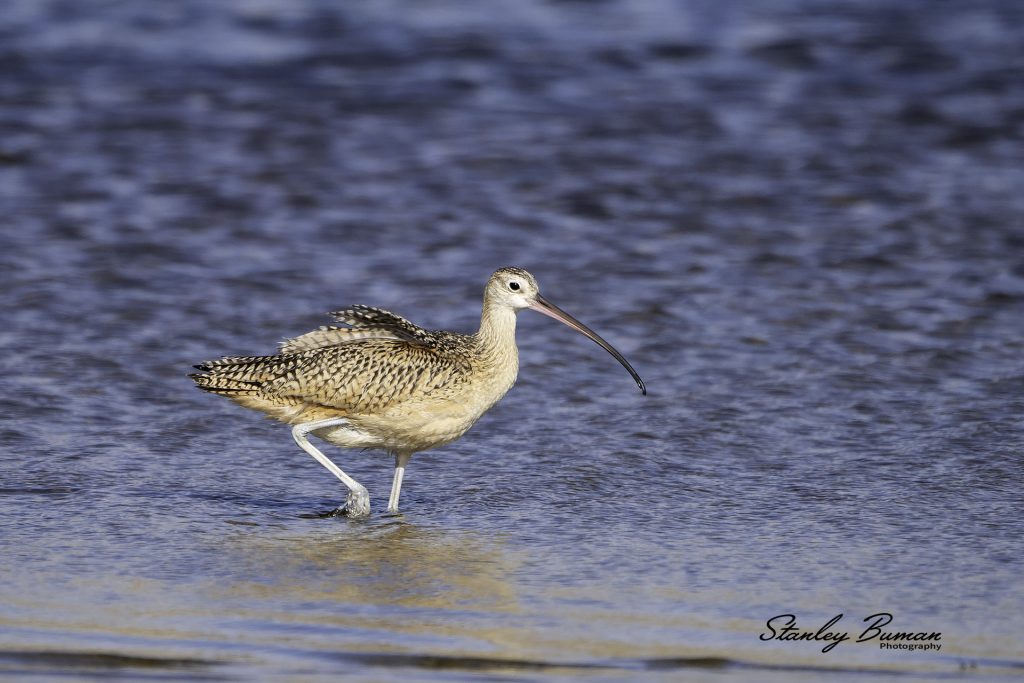While there are many bird species that love to hang out on our shorelines, the term shorebird refers to particular group of birds with distinct body shapes and behaviors. Three species of California shorebirds that fascinate me are the Long-billed Curlew, Whimbrel, and the Marbled Godwit.
Most shorebirds are carnivorous, with a diet of worms, crustaceans, insects, tadpoles, and other similar prey. The long bills of these three species allow them to probe deep in the sand and mud for their food.
The Long-billed Curlew breeds in the grasslands in the west-central part of North America and overwinters along the coasts. The same long decurved bill used for probing for prey in the sand and mud is also used for feeding on grasshoppers.

The Whimbrel’s breeding range is in the Arctic. Some of them make a 2500-mile nonstop journey over water to reach their wintering grounds on other continents; a truly remarkable feat.

Unlike the other two species, the Marbled Godwit has a slightly upturned bill. It’s breeding range is the shortgrass prairies near wetlands. It migrates to over-wintering sites along the coasts of United States, Mexico, and Central America.

All three of these species can be found on the shorelines of Point Reyes National Seashore. Their populations are affected by local habitat loss and activity, as well as that across North America and other continents. Activities around the globe impact our enjoyment of birds in our backyard.

